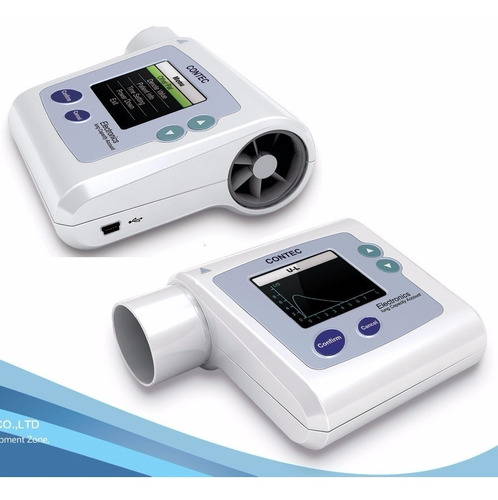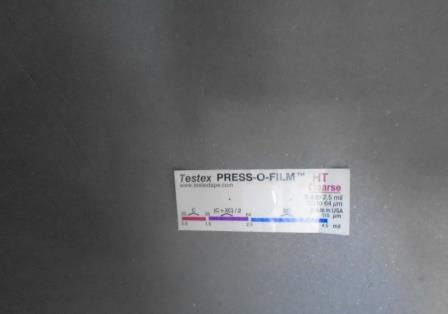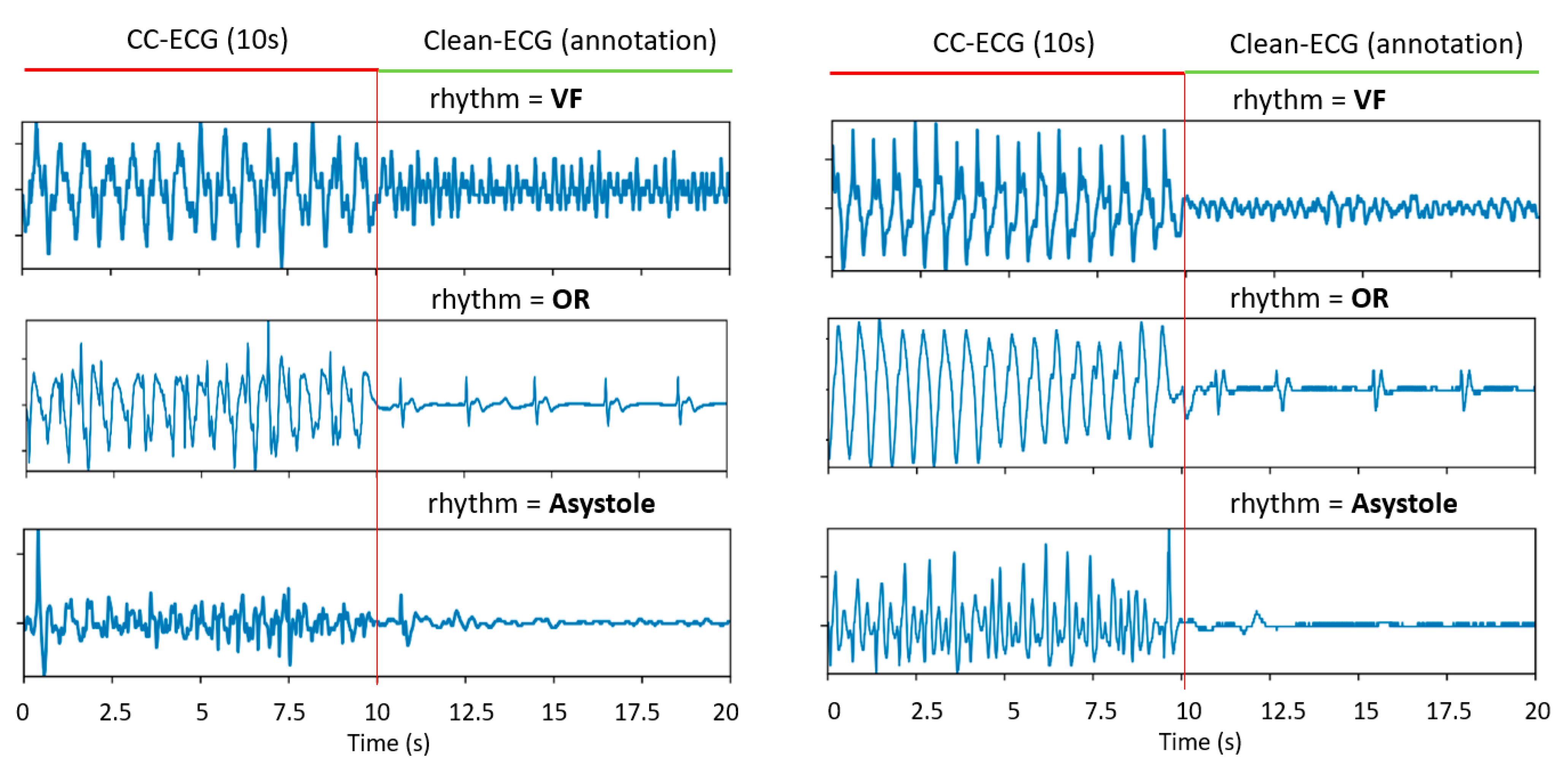The SP10 is discontinued and has been replaced with the upgraded FSP20 Spirometer
- Contec Spirometer Sp 10 Bt Pc Software Updates
- Contec Spirometer Sp 10 Bt Pc Software Update
- Contec Spirometer Sp10 Software Download
Features:
CONTEC SP10 Pulmonary Function Lung Volume Check Spirometer,USB+PC Software. CONTEC TLC5000 ECG Holter 12 Channel 24h EKG Monitor PC Software Analyzer. $449.00 ABOUT CONTEC. Contec Medical Systems Co., Ltd. Was founded in 1996 with the vision of innovating medical research, manufacturing, and distribution.
Introduction SPIROMETER is a hand-held equipment for checking lung conditions, adopts the infrared mode for measuring relative items, it is applicable for hospital, clinic, family for routine test. Features1) Forced Vital Capacity (FVC), Forced Expired Volume in one. Contec Spirometer Sp 10 Bt Pc Software Update SPIROMETER is a hand-held equipment for checking lung conditions, adopts the infrared mode for measuring relative items, and is applicable for hospital, clinique for routine test.Data memory,delete, upload and review.Flow rate-volume chart, volume-time.
Besides, the test condition can be shown by ratio of measured value and predicted. Item description CONTEC SP10 digital spirometer lung breathing diagnostic spirometry 8ten1944 sku: is a hand-held equipment for checking conditions, adopts the infrared mode measuring relative items, and applicable hospital, clinic routine test. Our product range includes a wide range of Mir Spirolab Iii Spirometer Machine, Vitalograph Pneumotrac With Spirotrac Spirometry Software Machine, Vitalograph In2itive With Pc Cradle And Spirotrac Machine, Vitalograph Initive With Printer Cradle And A4 Printer, Vitalograph Pneumotrac With Spirotrac Software 77002 Machine and Contec Handheld Sp10 Spirometer Machine.
- Forced Vital Capacity (FVC), Forced Expired Volume in one second (FEV1), FEV1 and FVC Ratio (FEV1%), Peak expiratory flow (PEF), 25% flow of the FVC (FEF25), 75% flow of the FVC (FEF75) and average flow between 25% and 75% of the FVC (FEF2575) can be measured. Results can be displayed in actual and predict ratio.- Flow rate-volume or volume-time waveform display.
- Inner flash memory for data review and storage where the data can also be uploaded to computers
- Light weight and portable.
- Simple operation and rapid test results
 - Basic analysis and general state explain
- Basic analysis and general state explain - Information prompts when volume or flow goes beyond the limits.
- Automatic power off after 1 minute idle time.
- Rechargeable lithium battery (DC 3.7V).
- Battery life indication.
Performance:
Display mode: 1.8' TFT colour screen, LED blacklight
Display resolution: 160 x 128 pixels
Volume range: 0~10L
Volume accuracy: ±3% or 0.05L (whichever is greater)
Flow range: 1 L/S ~16L/S
Flow accuracy: ±10% or ±0.3L/s (whichever is greater)
Working current: ?60 mA
Power supply: DC3.7V rechargeable lithium battery
Dimensions : 97mm(L) × 89mm(W)× 36mm(H)
Net weight: 150g
Content:
- SP10 Spirometer
- User Manual
- Disposable mouthpiece
- USB cable
- Software CD
- 100 ~ 240V Universal Charger (2-round-pin style)
Pulmonary patients have been using personal peak flow meters for several decades and I started to seeing patients that had their own oximeter over 10 years ago. Within the last couple of years a number of different spirometers intended for personal use have become available. These devices have significant limitations when compared to regular office or lab spirometers but because there are many individuals with asthma or COPD for whom FEV1, and possibly FVC, are significantly better indicators of lung health than Peak Flow (PEF) alone, I think they can serve a useful purpose.
There is no official definition of what constitutes a personal spirometer but I’m going to go with the ability to measure FEV1 as a minimum which means that there is a bit of crossover with some of the electronic peak flow meters. Because the majority of personal spirometers I have been able to find sell for less than $500 for the time being I’m going to keep the discussion to spirometers that I believe are under that price point.
There is, of course, a correlation with price and the number of features. Not surprisingly, the least expensive units measure the fewest values and have the least memory. More is not necessarily better, however, and I think that the first factor that should be considered when comparison shopping is what needs to be measured?
| Company: | Product: | Measures: |
| Carefusion | Micro1 | FEV1, FEV6, FEV1/FEV6, PEF, FEF25, FEF75, FEF25-75, Pre/Post-Bronchodilator, %predicteds |
| Carefusion | Precison Diary | FEV1, FEV6, PEF |
| Carefusion | PulmoLife | FEV1, FEV1% predicted, Lung age |
| Contec | SP10 | FEV1, FVC, FVC, PEF, FEF25, FEF75, FEF25-75, %Predicted. |
| Ganseman | PC-Spiro | FEV1, FVC, PEF, FEV1/FVC ratio, %predicteds |
| MDSpiro | PulmoLife | FEV1, FEV1% predicted, Lung age |
| MDSpiro | SpiroCheck | FEV1, FEV1% predicted, Lung age |
| MDSpiro | SpiroCheck Home Monitor | FEV1, FEV6 |
| Nspire | Piko-6 | FEV1, FEV6, FEV1/FEV6 |
After FEV1, the FVC (or FEV6) and the FEV1/FVC (or FEV1/FEV6) ratio look to be most useful. My personal opinion is that FEF25, FEF75 and FEF25-75 are of little value largely because they are highly variable and usually provide much less information than FEV1 and the FEV1/FVC ratio. I’m also uncertain about the value of Lung Age calculations. It’s one way to assess results that may be easier for some individuals to understand but it also depends a lot on the accuracy of the reference equations and I think that just trending FEV1 is more useful in the long run. Pre/post-bronchodilator testing looks to be most useful for clinical trials but is probably a less important option for an individual.
The second most important factor is how do the results need to be managed?
| Company: | Product: | Results: |
| Carefusion | Micro1 | Uploads to PC via USB, includes PC software to manage results |
| Carefusion | Precision Diary | Uploads to PC via USB, includes PC software to manage results |
| Carefusion | PulmoLife | Self-contained, no internal memory |
| Contec | SP10 | Uploads to PC via USB, Bluetooth optional, includes PC Software to manage results |
| Ganseman | PC-Spiro | Sensor attached to PC via USB, PC software performs tests, manages results |
| MDSpiro | SpiroCheck | Self-contained, no internal memory |
| MDSpiro | SpiroCheck Home Monitor | Self-contained, stores up to 200 results |
| MDSpiro | PulmoLife | Self-contained, no internal memory |
| Nspire | Piko-6 | Optionally uploads results to PC via USB cradle with PC software to manage results |
Being able to download results to a PC so that they can be stored, trended and printed certainly makes managing the information much easier and more convenient. Results can also be hand-written in a logbook or hand-entered into a spreadsheet however, which actually may be quicker and easier than going through the download process. Having said that, at least one personal spirometer comes with a bluetooth option that would seem to make the download process relatively painless.
Most of the spirometers come with a built-in LCD display that usually displays only numbers and very simple graphics. The PC software that comes with some of the spirometers can display volume-time and/or flow-volume curves once the test results have been uploaded. This is a critical function for lab or office spirometry but is not really necessary for a personal spirometer and may even be too much information for many users. This function would seem to be important only for sophisticated users and for clinical trials.


An important question, and one I cannot answer, is how accurate and reliable are these spirometers?
Making a flow or volume sensor that is accurate and reliable is difficult. This is why PFT Lab staff are accustomed to routinely calibrating and performing quality control on all of their spirometers. None of the personal spirometers, however, can be calibrated (and in some cases a 3-liter calibration syringe costs more than the spirometer!) and I do not expect that the average user could be expected to perform regular and accurate calibrations. This means that the manufacturers have had to make choices about their measurement technology that will allow the spirometers to be reasonably accurate over the lifetime of the device. The majority of personal spirometers use turbine sensors.
| Company: | Product: | Sensor: |
| Carefusion | Micro1 | Turbine |
| Carefusion | Precison Diary | Turbine |
| Carefusion | PulmoLife | Turbine |
| Contec | SP10 | Turbine |
| Ganseman | PC-Spiro | Pneumotach |
| MDSpiro | SpiroCheck | Turbine |
| MDSpiro | SpiroCheck Home Monitor | Turbine |
| MDSpiro | PulmoLife | Turbine |
| Nspire | Piko-6 | Vane |
Turbine sensors have been around for decades and although they have been shown to have long-term reliability and accuracy I have some reservations about their use in personal spirometers (it’s not personal though since I have reservations about any sensor used in personal spirometers). There are two specific limitations of turbine sensors. The first is inertial lag. This occurs whenever flow rates are rapidly increasing or decreasing. Most turbine sensors have a fixed set of vanes (like fan blades) on either end of the sensor which causes the airflow through the sensor to swirl and move a flat vane. The rotation of the vane is detected by a light sensor.
Although the rotating vane has very little mass, there is still a delay from when a change in flow rate occurs and when the rotation speed of the vane matches the new flow rate. This is particularly true when flow changes direction.
The second limitation exists because airflow through the sensor must swirl for the internal vane to rotate. When flow rates are low, however, swirling may not occur or may not occur with enough force to rotate the vane. This means that turbine sensors require air flow to be above some minimum value before it can be measured.
Inertial lag is corrected in software by noting changes in rotation rate (either acceleration or deceleration) and then “predicting” what the flow rate “really” is by knowing the inertial characteristics of the sensor. The minimum airflow limitation cannot be corrected and may be the primary reason that some personal spirometers measure FEV6 rather than FVC.


A variety of manufacturers sell lab and office spirometers using turbine sensors that meet ATS/ERS standards and there is no reason to believe the turbines used in personal spirometers are any different. Lab and office spirometers are capable of being calibrated however, and don’t sit for periods of time at the bottom of pockets or purses before being used. Lab and office spirometers are also usually attached to relatively fast and powerful PC’s instead of a low-power (both in terms of power consumption and processing power) microprocessor.
I am not picking specifically on turbine sensors. Given the application they are probably one of the better choices. I am concerned however, that changes in FEV1 and FVC may be due to changes in sensor function and not the individual performing the test and that this may cause either unnecessary alarm or for decreases in lung function to go unnoticed. To my knowledge none of these personal spirometers have ever been studied for long term accuracy and reliability under “field” conditions and I will continue to have reservations until this has been done
Contec Spirometer Sp 10 Bt Pc Software Updates
Personal health monitoring has become an explosively expanding field and I think this is a good thing. I started in the medical field when it was still very paternalistic and I have watched it evolve into the more open and collaborative system it is today. I think that personal health monitors have the ability to engage participants in their own health care, improve quality of life, reduce hospitalizations and reduce costs. In our particular area of health care I think that FEV1 is superior to PEF when it comes to monitoring respiratory health. I think that FVC (or FEV6) can also be a useful measurement and it is for these reasons that I think that personal spirometers are superior to peak flow meters and should be more commonly used.
I am a bit dismayed at the cost of personal spirometers (particularly considering their simplicity) since at this time most insurers will not cover their cost and this limits who can afford them. I am also somewhat dismayed at the range in prices within the same families of spirometer since there is little physical difference between the least expensive and most expensive personal spirometers except for their software.
Results also need to be shared with an individual’s physician to be really useful and there continues to be significant limitations in this area. Usually the best that can be expected is to be able to print results and bring them along on an office visit. Very rarely results can be emailed to a physician or clinic, but as an example I personally receive my own health care at two very technologically advanced medical centers and I can’t do that other than by manually typing test results in an email within their patient care system. This area is improving rapidly, but mostly in the communications between hospitals, clinics and physician offices. Patient communications is coming in a distant last so I suspect it will still be quite a few years before routine communication between personal health monitors and health care providers occurs. Admittedly some of the personal spirometers are probably intended for clinical trials and can transmit results over the internet but this is primarily to proprietary systems and not to regular health care providers.
Finally I think that personal spirometers are a work in progress. The ultimate goal would be a flow sensor that is robust, accurate, reliable and inexpensive but I doubt all of these criteria can be met in a single device. There will always be trade-offs but better solutions than those in current use may come forward at some point. Additionally most of the personal health monitors shown at the recent consumer shows have bluetooth links to android or apple smartphones. Those personal spirometers that can upload their results usually do this with a USB cable to a personal computer. None are able to link to smartphones (or tablets) and I think this is a significant mistake. Partly because costs could be decreased by having the spirometer consist of only a sensor and bluetooth module (potentially inexpensive enough to be cheap to be able replace regularly?) with all of the processing being done by the smartphone. Software updates and enhancements could easily be distributed and since results would already be in the smartphone it would also be much easier to store and share results.
Links:
Contec
The SP10 spirometer is sold by a variety of distributors on Ebay and Amazon. There is a version with bluetooth built in. It is made in China, probably by more than one manufacturer, and the Contec brand name is the most recent one used for this spirometer. It has been sold in the past under the MediTech brand name as well.
Ganseman
PC-Spiro. Update: No longer sold.
Contec Spirometer Sp 10 Bt Pc Software Update
Piko-6. Update: No longer listed on the Nspire website.
Contec Spirometer Sp10 Software Download
PFT Blog by Richard Johnston is licensed under a Creative Commons Attribution-NonCommercial 4.0 International License.